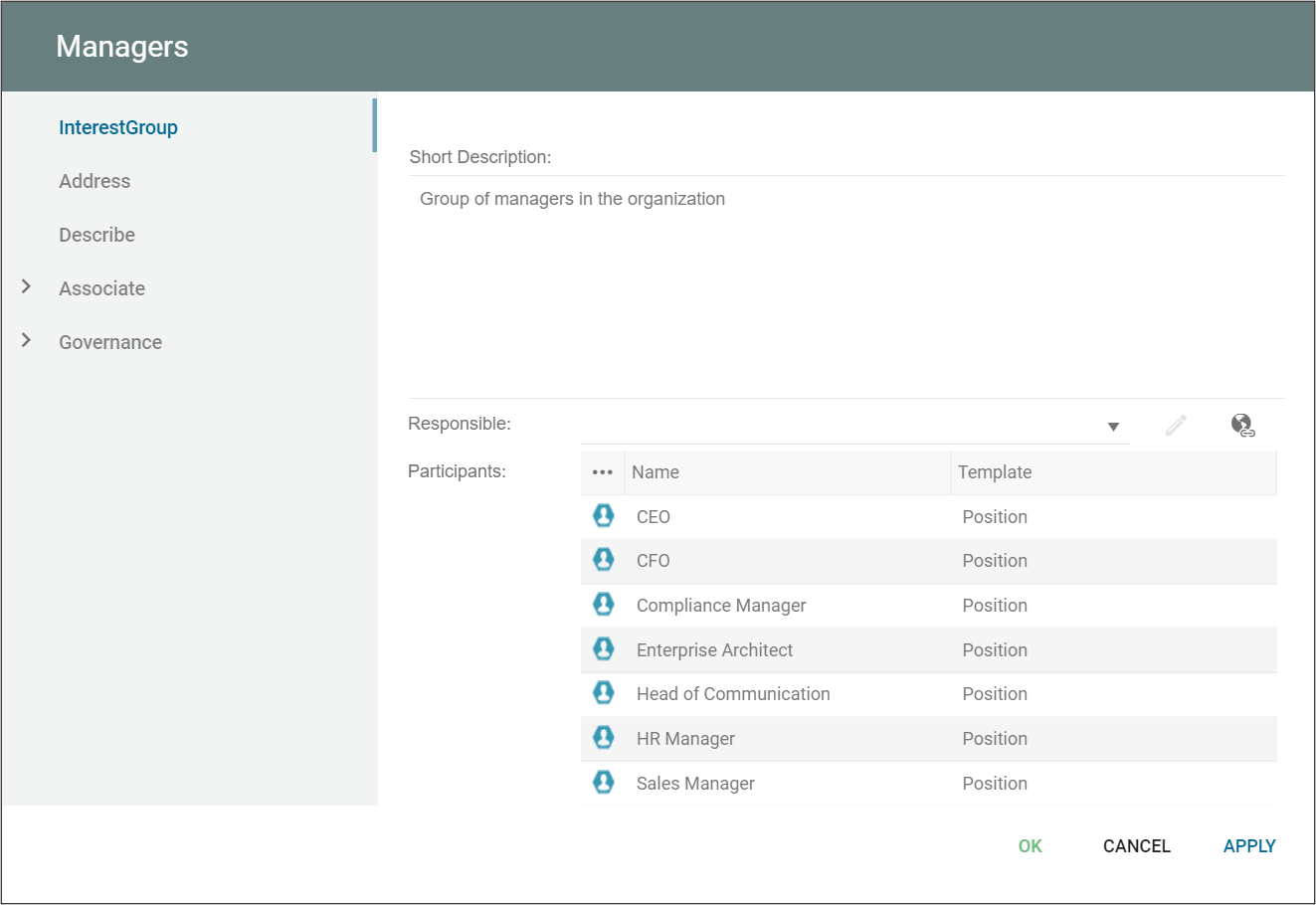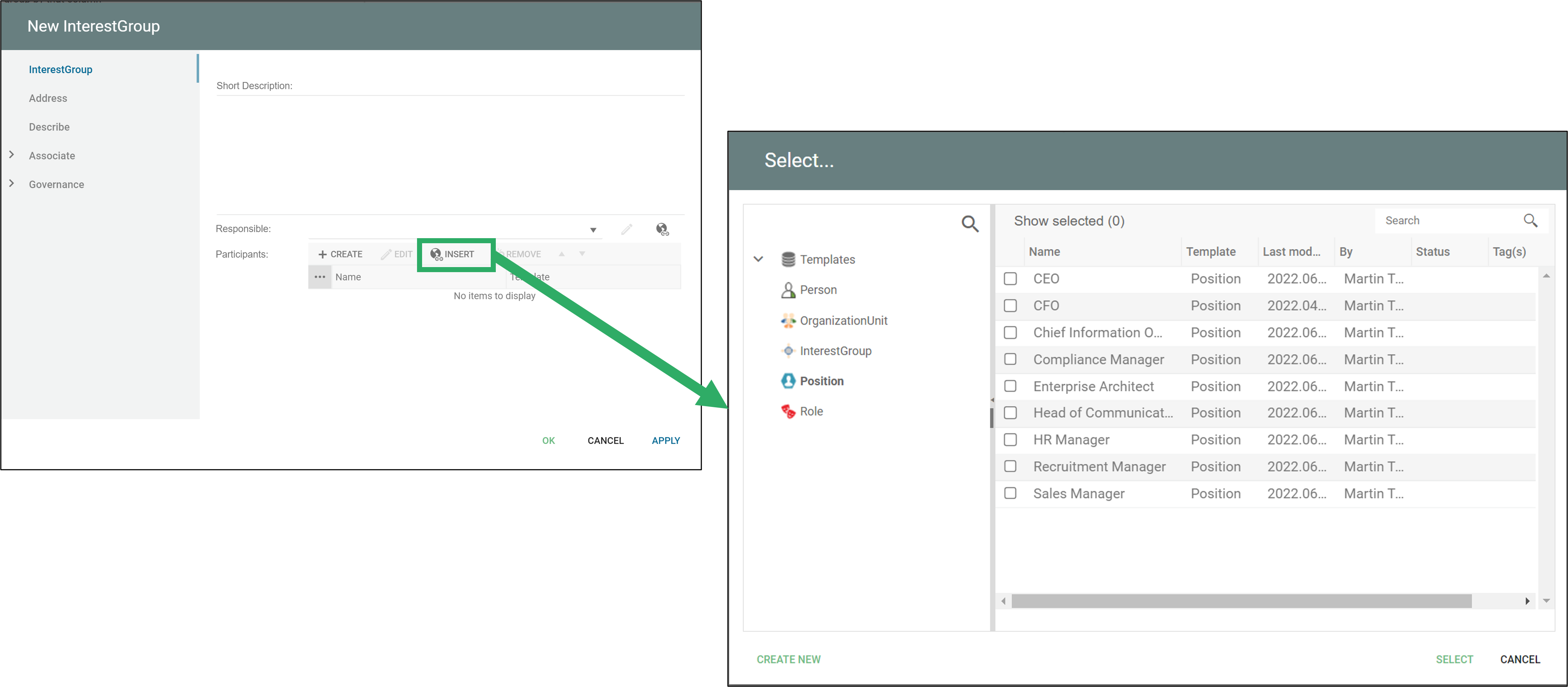This object is used to describe an IT-Service.

The service can be associated to:
- Belongs to: IT-Service-Group
- Infrastructure Technology Configuration used
- Information-System used
Templates and model types in the QualiWare platform.
This object is used to describe an IT-Service.

The service can be associated to:
Description of this template will be available soon.
The inventory symbol describes the holdings of a company’s raw materials, work-in-progress products, finished goods, and safety stock. The symbol represents the physical goods that the company holds in stock and is ready to sell or use in its operations.
A region that can be interrupted by external events, allowing for exception handling or cancellation.
Interface Realization is a template in a Class Diagram that represents the relationship between a class (or component) and an interface, indicating that the class implements the interface. An interface is a collection of abstract operations (methods or functions) without any implementation details. A class that realizes an interface is contractually obligated to provide an implementation for all the operations defined in the interface.
Interface Realization promotes the concept of separation of concerns by defining the contract (interface) separately from the implementation (class). This allows for greater flexibility and maintainability, as multiple classes can implement the same interface while providing different implementations, and changes to the interface or implementation can be made independently.
Example: In a Class Diagram for a system that processes payments, you might define an interface called “PaymentProcessor” with operations like “authorizePayment()” and “capturePayment()”. Then, you can create different classes such as “CreditCardProcessor” and “PayPalProcessor” that realize the “PaymentProcessor” interface. Each of these classes will have to provide their own implementation of the “authorizePayment()” and “capturePayment()” operations, as defined in the interface. This allows the system to handle various payment methods while maintaining a consistent API for processing payments.
This template is part of the UML. Interfaces declare coherent services that are implemented by BehavioredClassifiers, such as a Class, that implement the Interfaces via Interface Realization.
For more information about the UML, you can find the current specifications here.
Properties
The Interface tab
| Property | Metamodel name | Description |
| Short Description | ShortDescription | |
| Property | Property |
Choices are: Root Leaf Abstract |
| Visibility | Visibility |
Choices are: Protected Public Private Package |
| Operations | HasOperations | Links to: Operation. |
The Extensions tab
| Property | Metamodel name | Description |
| Stereotype | Stereotype | Links to: Stereotype. |
| Constraints | HasConstraints | A reference to a named rule that extends the semantics of the component. Links to: Constraint. |
| Tagged values | HasTaggedValues | The set of tagged values that extends the properties of this component. Links to: Tag Definition. |
InterestGroup is a template that can be used to collect a set of organizational objects into a group.

In the standard Metamodel you can include the following templates types into an interest group:

An InterestGroup can be used to in relation to other objects in the repository, in relations to GovernanceWorkFlows or AcknowledgeLists.
Description of this template will be available soon.
Description of this template will be available soon.
Interaction refers to the way in which different components or objects within a system interact or communicate with each other to perform specific tasks or functions. Interaction can involve various types of communication, such as messages, events, or function calls.
For example, in a system where a customer places an order for a product, the interaction might be illustrated through a line connecting the customer object to the order object, and another line connecting the order object to the product object. The lines would represent the interactions between the objects, since the customer interacts with the order, and the order interacts with the product.